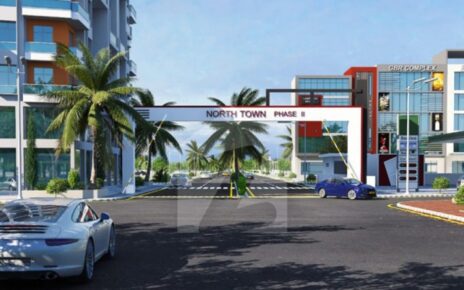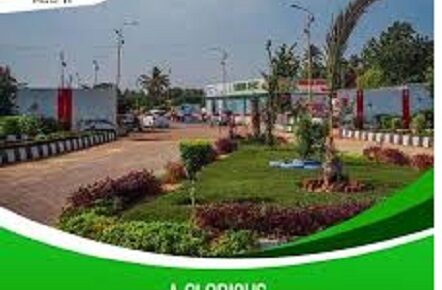Pakistan, a land of immense beauty and cultural diversity, is blessed with five captivating provinces, each with its unique charm and rich heritage. Let’s take a virtual tour across this beautiful nation and explore the fascinating provinces that make up Pakistan.
- Punjab: Punjab, the largest and most populous province of Pakistan, is known as the heartland of the country. With its vibrant cities like Lahore, Multan, and Faisalabad, Punjab is a melting pot of culture, history, and culinary delights. The province is home to the iconic Badshahi Mosque, the majestic Lahore Fort, and the revered shrines of Sufi saints. Punjab’s agricultural landscapes are also famous for producing the finest Basmati rice and juicy citrus fruits.
- Sindh: Sindh, situated in the southern part of Pakistan, is a province with a rich historical legacy. The ancient city of Mohenjo-Daro, a UNESCO World Heritage site, provides a glimpse into the Indus Valley Civilization. Karachi, the bustling metropolis and the economic hub of Pakistan, offers a vibrant mix of modernity and tradition. Sindh is also renowned for its colorful handicrafts, traditional Sindhi music, and mouth-watering Sindhi cuisine, especially the famous Sindhi Biryani.
- Khyber Pakhtunkhwa: Nestled in the northwestern region of Pakistan, Khyber Pakhtunkhwa is a province of breathtaking beauty. With its majestic mountain ranges, including the mighty Himalayas and the stunning Swat Valley, this province is a paradise for nature lovers and adventure enthusiasts. Peshawar, the provincial capital, is a city steeped in history, boasting a rich Mughal and Pashtun heritage. Khyber Pakhtunkhwa is also famous for its delicious cuisine, such as the aromatic Peshawari karahi and the delectable Chapli kebabs.
- Balochistan: Balochistan, the largest province in terms of land area, is a treasure trove of natural wonders. Its rugged terrain, expansive deserts, and stunning coastline along the Arabian Sea offer a truly awe-inspiring experience. Quetta, the provincial capital, is surrounded by snow-capped mountains and serves as a gateway to the enchanting Ziarat Valley. Balochi culture and traditions are deeply rooted in this province, and the warm hospitality of its people is legendary.
- Gilgit-Baltistan: Nestled in the majestic Karakoram and Himalayan mountain ranges, Gilgit-Baltistan is often referred to as the “roof of the world.” This region is blessed with breathtaking landscapes, including the famous Hunza Valley, Nanga Parbat, and the captivating Deosai Plains. Gilgit-Baltistan is a hub of adventure tourism, offering opportunities for mountaineering, trekking, and wildlife exploration. The region’s unique culture, folklore, and ancient traditions add to its allure.
Do you want to explore the cultural richness, historical significance, and natural beauty of each province?
Are you interested in learning about the capitals of these provinces and the diverse communities that call them home?
Do you want to delve into the fascinating information about the provinces of Pakistan and understand their importance in shaping the country’s identity?
If you answered yes to any of these questions, then this blog is for you! Join us as we embark on a journey through the five provinces of Pakistan, exploring their intriguing landscapes, cultural heritage, and the stories that make them truly unique. Get ready to be amazed by the diversity and beauty that await you in Punjab, Sindh, Khyber Pakhtunkhwa, Balochistan, and Gilgit-Baltistan. Let’s dive in and discover how many provinces of Pakistan are there?
List of 5 Provinces of Pakistan
How many provinces are there in Pakistan? What are the 5 provinces of Pakistan?
The following are Pakistan province’s name:
- Punjab
- Khyber Pakhtunkhwa
- Sindh
- Balochistan
- Gilgit-Baltistan
1. Punjab
Punjab, one of the 5 provinces of Pakistan, holds a significant place within the nation’s cultural and historical landscape. With its sprawling plains and rich agricultural heritage, Punjab encompasses a vast expanse of approximately 205,344 square kilometers, making it the largest province in terms of land area.
The provincial capital of Punjab is Lahore, a vibrant city that pulsates with a blend of ancient traditions and modern developments. Known as the cultural heart of Pakistan, Lahore showcases a mesmerizing fusion of Mughal architecture, bustling bazaars, and delectable culinary delights.
Punjab, the largest province of Pakistan by population of over 110 million people, stands as the most populous province in Pakistan. This populous region is home to diverse communities, including Punjabis, Sindhis, Pashtuns, Balochis, and various ethnic and religious minorities. The province embraces a rich tapestry of languages, customs, and festivals, reflecting the diversity of its inhabitants.
The land of Punjab is blessed with fertile soil that yields abundant crops, making it the breadbasket of the country. Agriculture forms the backbone of the province’s economy, with wheat, rice, sugarcane, and cotton being the main agricultural products. Its robust irrigation system, consisting of the Indus River and its tributaries, ensures a steady water supply for farming.
Punjab’s historical significance is unrivaled, as it has been a witness to various ancient civilizations and empires. The region boasts numerous archaeological sites, including the ancient cities of Harappa and Taxila, which offer glimpses into the Indus Valley and Gandhara civilizations. The province also holds sacred religious sites, such as the revered shrine of Data Darbar in Lahore and the birthplace of Guru Nanak Dev Ji, the founder of Sikhism, in Nankana Sahib.
Apart from its cultural and historical heritage, Punjab is home to several educational institutions, renowned universities, and industrial centers. The city of Faisalabad is a major industrial hub, specializing in textiles and manufacturing, contributing significantly to Pakistan’s economy.
In summary, Punjab, the largest province of Pakistan by land area and population, showcases a captivating blend of history, agriculture, diverse communities, and cultural richness. From the bustling streets of Lahore to the fertile fields stretching across the horizon, Punjab remains a key pillar in shaping Pakistan’s identity and contributing to its growth and development.
Facts of Punjab
- It is a five-river province.
- Punjab has a larger land mass than Kyrgyzstan.
- It has Pakistan’s highest literacy percentage, at 59.3%.
- There are seven distinct dialects spoken. (Punjabi, Majhi, Saraiki, Hindko Urdu, English, Sindhi)
- The Punjab area has the earliest temples and gardens, dating from 1524 to 1739.
- Khewra Salt Mine, the world’s second-largest salt mine, is situated in Islamabad, which is in the Punjab area.
2. Khyber Pakhtunkhwa
Khyber Pakhtunkhwa, commonly known as KP, is one of the four provinces of Pakistan and holds great historical and cultural significance. Situated in the northwest region of the country, Khyber Pakhtunkhwa covers an area of approximately 101,741 square kilometers.
The provincial capital of Khyber Pakhtunkhwa is Peshawar, a city steeped in history and renowned for its strategic location along ancient trade routes. Peshawar serves as a gateway to the historic Khyber Pass and has been a center of trade and commerce for centuries.
With a population exceeding 35 million, Khyber Pakhtunkhwa stands as the third most populous province in Pakistan. The province is predominantly inhabited by Pashtuns, who form the largest ethnic group and contribute significantly to the region’s vibrant culture, traditions, and Pashto language.
Khyber Pakhtunkhwa is blessed with diverse natural beauty, characterized by picturesque valleys, snow-capped peaks, and lush green forests. The region is home to breathtaking landscapes, including Swat Valley, known as the “Switzerland of Pakistan,” and the enchanting valleys of Chitral and Dir. These areas attract tourists from around the world, offering opportunities for trekking, mountaineering, and exploring the rich biodiversity of the region.
The province has a rich historical legacy, with ancient civilizations leaving their marks on the land. Taxila, a UNESCO World Heritage site, showcases the remains of Gandhara civilization, while the historic city of Takht-i-Bahi is known for its Buddhist monastic complex. The iconic Khyber Pass has witnessed countless historical events and has been a crucial route for trade and invasions throughout history.
Khyber Pakhtunkhwa is also known for its significant contributions to Pakistan’s economy. The province has vast mineral resources, including natural gas, coal, and gemstones, which play a vital role in the country’s industrial and energy sectors. Agriculture is another important sector, with crops such as wheat, maize, sugarcane, and fruits being cultivated in the fertile lands of the province.
Education and healthcare are key focus areas in Khyber Pakhtunkhwa, with the provincial government working towards improving access to quality education and healthcare facilities. The province is home to reputable universities, including the University of Peshawar and Khyber Medical University, which contribute to the intellectual and professional development of the region.
In conclusion, Khyber Pakhtunkhwa, with its historical significance, natural beauty, and rich cultural heritage, stands as a remarkable province in Pakistan. From the bustling streets of Peshawar to the majestic peaks of Swat, Khyber Pakhtunkhwa offers a tapestry of experiences that immerse visitors in its fascinating history, stunning landscapes, and warm hospitality.
Facts of Khyber Pakhtunkhwa
- It is Pakistan’s third-largest province in terms of people and income.
- Geographically, it is Pakistan’s tiniest state.
- It is the historical location of the Gandhara Empire.
- As a result of Operation Zarb-e-Azb, approximately 929,859 persons were relocated from North Waziristan to Khyber Pakhtunkhwa in 2014.
- It is split into three sections: settled regions, FATA (Federally Administered Tribal regions), and PATA (Provincially Administered Tribal Areas). (Provincially Administered Tribal Areas).
- It has a reading percentage of 50%.
- There are several dialects spoken. (Khowar, Hindko, Kohistani, Shina, Torwali, Kashmiri, Kalasha, Farsi, and Kaghani).
3. Balochistan
Balochistan, the largest province of Pakistan in terms of land area, is located in the southwestern part of the country. Covering a vast expanse of approximately 347,190 square kilometers, Balochistan is known for its rugged and diverse terrain.
Quetta serves as the provincial capital of Balochistan, nestled amidst the picturesque valleys of the region. The city is surrounded by snow-capped mountains, making it a popular destination for nature lovers and adventure enthusiasts.
Although Balochistan is the largest province in terms of land area, it has the smallest population compared to other provinces in Pakistan. The province is home to various ethnic groups, including Balochis, Pashtuns, Brahuis, and Hazaras, each contributing to the cultural mosaic of the region.
Balochistan is rich in natural resources and has immense potential for economic development. The province is known for its reserves of natural gas, coal, copper, and other minerals, which play a vital role in the national economy. It also has a significant coastline along the Arabian Sea, offering opportunities for fishing and maritime trade.
The province has a unique cultural heritage, with rich traditions, crafts, and folklore. Balochi and Brahui are the predominant languages spoken in the region. The people of Balochistan are known for their hospitality and warmth, and their traditional music and dance forms, such as the Sibi Festival, reflect their vibrant cultural identity.
Balochistan is home to several historical and archaeological sites that hold immense historical importance. The ancient city of Quetta, with its archaeological ruins, offers insights into the region’s past civilizations. The historic Makran Coastal Highway, connecting Balochistan with Sindh, showcases stunning coastal landscapes and ancient trading routes.
Education and healthcare are important focus areas in Balochistan, with efforts being made to improve access to quality education and medical facilities. The province is also investing in infrastructure development, including road networks and communication systems, to promote connectivity and economic growth.
In summary, Balochistan, the largest province of Pakistan in terms of land area, is a region of remarkable natural beauty, rich resources, and diverse cultural heritage. Its vast landscapes, ancient history, and warm hospitality make it a fascinating destination for exploration and discovery. Balochistan holds great potential for economic development and offers a glimpse into the untamed beauty of Pakistan’s southwestern frontier.
Facts about Balochistan
- It is surrounded by three countries: Pakistan, Iran, and Afghanistan.
- It covers 40% of Pakistan’s total land mass.
- On May 26, 2010, the maximum weather was 53 degrees Celsius (127 degrees Fahrenheit) in Sibi, Balochistan.
- There are only 27% of literate women, which is the lowest in the world.
- Many small-scale businesses are limited to cotton and textile manufacturing. (Carpet making, textile, and leather embroidery).
4. Sindh
Sindh, located in the southeastern part of Pakistan, is one of the 5 provinces of Pakistan. Covering an area of approximately 140,914 square kilometers, it is the third-largest province in terms of land area.
The provincial capital of Sindh is Karachi, which is also the largest city in Pakistan and the country’s economic hub. The province is home to other major cities such as Hyderabad, Sukkur, and Larkana.
Sindh is the second-largest province in terms of population, with over 47 million people living in the region. The province is home to a diverse mix of ethnic groups, including Sindhis, Muhajirs, Balochis, and Punjabis, each contributing to the cultural mosaic of the region.
Sindh is known for its rich cultural heritage and has a long history of civilization dating back to the Indus Valley Civilization. The province has numerous historical and archaeological sites, including the ancient city of Mohenjo-Daro, which is a UNESCO World Heritage site.
Sindh is also an important economic region, contributing significantly to the national economy of Pakistan. The province is known for its agricultural production, particularly in cotton and rice. It is also a hub for trade and commerce, with its strategic location on the Arabian Sea and a bustling port at Karachi.
The province has a well-developed infrastructure, including road networks, airports, and seaports. It is also home to several educational institutions, including the University of Sindh and the Institute of Business Administration in Karachi, among others.
Sindh is a vibrant and culturally rich province, with a diverse population, a rich history, and a thriving economy. Its mix of traditional and modern lifestyles, picturesque landscapes, and bustling cities make it a fascinating destination for tourists and travelers alike. Whether exploring ancient ruins or modern cityscapes, Sindh offers a unique and unforgettable experience to all who visit.
Facts of Sindh
- In the Indo-Pakistan region, Sindh is regarded as the Gateway to Islam.
- Sindh has natural resources such as coal, natural gas, and crude oil/petroleum.
- Agriculture is the foundation of Sindh’s prosperity.
- Sindh’s total literacy percentage is 60%.
- Sindh’s countryside population is 35% educated.
- An estimated 60% of the populace is uneducated.
5. Gilgit-Baltistan
Gilgit-Baltistan is a mountainous region located in the northern part of Pakistan. While it is not officially recognized as a province, it holds the status of a separate administrative unit. With its breathtaking landscapes and unique cultural heritage, Gilgit-Baltistan is a gem nestled within the majestic Karakoram and Himalayan mountain ranges.
Covering a total area of approximately 72,971 square kilometers, Gilgit-Baltistan is renowned for its stunning natural beauty. The region is home to some of the world’s highest peaks, including K2, the second-highest mountain on Earth. Majestic glaciers, sparkling lakes, and picturesque valleys, such as Hunza and Skardu, captivate visitors with their awe-inspiring vistas.
Gilgit serves as the administrative capital of Gilgit-Baltistan, while Skardu is its cultural and tourism hub. The region is home to diverse ethnic groups, including Gilgitis, Baltis, and Shinas, each contributing to the vibrant cultural tapestry of the area. Local languages such as Shina, Balti, and Burushaski are spoken in the region.
Despite not being a recognized province, Gilgit-Baltistan has its own legislative assembly, governor, and chief minister. The region has a unique administrative setup and enjoys a level of autonomy in local governance.
Gilgit-Baltistan is a popular destination for adventure tourism. Mountaineering, trekking, and mountain biking are popular activities that attract thrill-seekers from around the globe. The region also boasts several historical and cultural landmarks, including ancient forts, Buddhist rock carvings, and centuries-old mosques.
The people of Gilgit-Baltistan are known for their warm hospitality, rich folklore, and traditional festivals. The region has a strong connection to its natural surroundings, with a deep respect for the environment and a commitment to preserving its pristine beauty.
In summary, Gilgit-Baltistan, while not recognized as a province, is a captivating region of Pakistan that holds a unique place due to its stunning landscapes, rich cultural heritage, and adventurous spirit. Its awe-inspiring mountains, vibrant communities, and cultural treasures make it a must-visit destination for nature enthusiasts and explorers seeking to experience the wonders of the Karakoram and Himalayan ranges.
Facts of Gilgit Baltistan
- Gilgit-Baltistan is located between the world’s tallest ranges, the Karakoram and the Himalayas.
- The biggest glaciers in Gilgit-Baltistan are the Baltoro, Batura, and Hispar.
- There are more than six dialects spoken.
- Gilgit-Baltistan is home to a number of magnificent highland towns.
- Baltistan was formerly component of Greater Tibet and was dubbed “Little Tibet.”
- It featured a Cannibal King (Sheri Badad) who enjoyed consuming the innards of freshly born human infants.
- Islam arrived in Baltistan in the 15th century, and in the Gilgit area in the 16th century.
- Polo is Gilgit-Baltistan’s state pastime.




